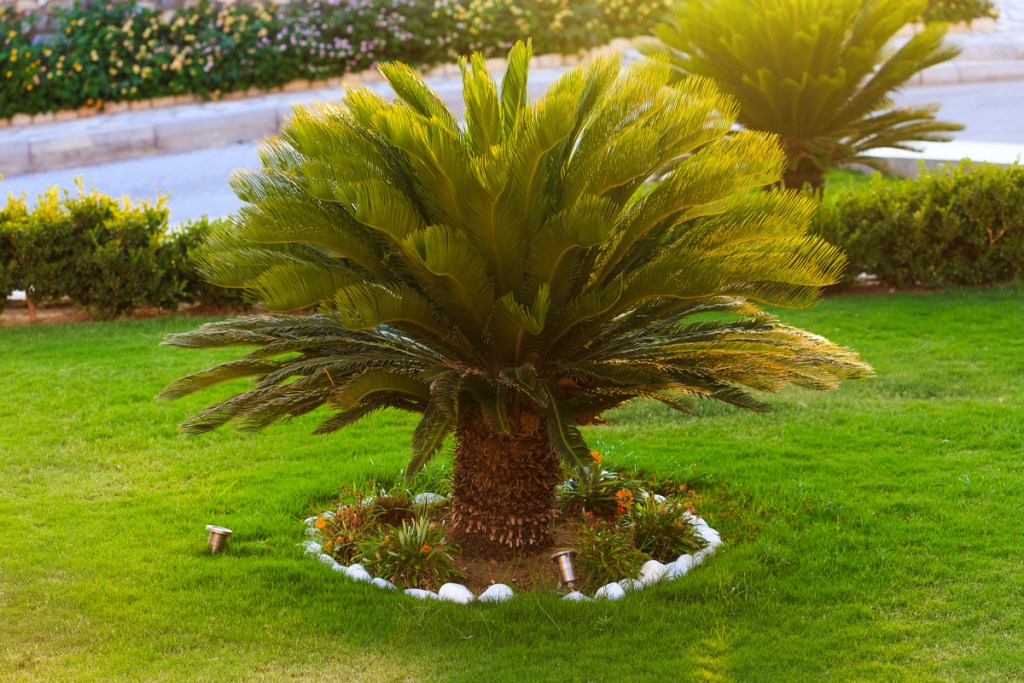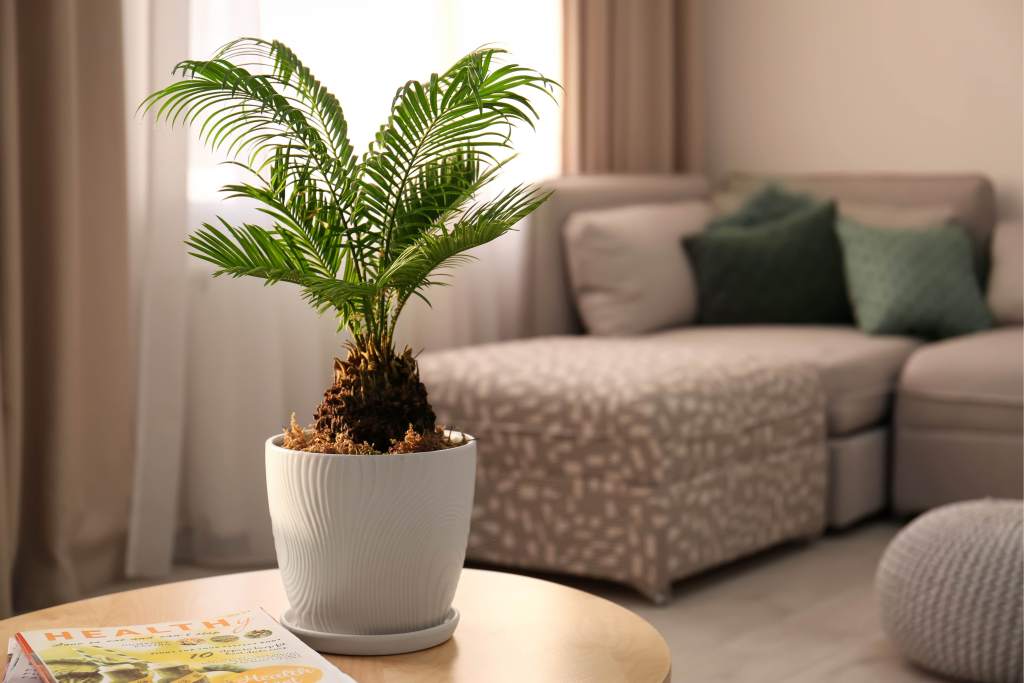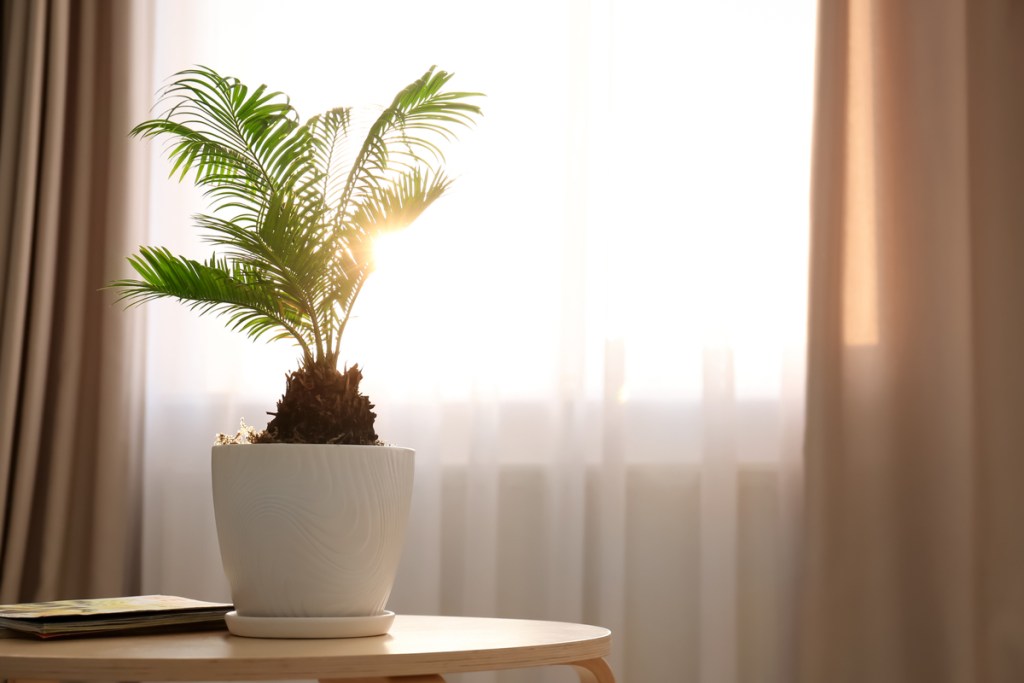It’s hard to think of an ornamental house plant with a richer history than the sago palm. Dating back an estimated 200 million years — making it older than most dinosaurs — the sago palm is not technically a palm tree but rather part of a group of plants called cycads, a close cousin of the conifer.
And it’s far more than an attractive addition to your home garden. Originating in East and South Asia, sago palms have long been cultivated for a variety of uses. Although extremely toxic in its natural state, a properly processed sago palm remains a food staple in many Pacific nations and is frequently used in the production of goods ranging from textiles to soft drinks.
In Western cultures, the sago palm has garnered plenty of fans who treasure it for its bright green, featherlike fronds. It’s also easy enough for even novices to grow. If you’re in the market for a perfect ornamental, the sago palm may be just what you’re looking for. Here’s a closer look at this popular tree and how to grow and care for it at home.

Should I grow sago palms indoors or outdoors?
The short answer is — both are great options! How’s that for a versatile plant? It’s a snap to grow a sago palm indoors as a houseplant, regardless of where you live.
They also work well as an outdoor plant, but only in places with warmer winters. And during the summer, they need partial shade to help prevent those delicate leaves from burning in direct sunlight.
Bottom line: It’s safer to keep your sago palm indoors, but they can thrive in either environment.

How to plant and care for sago palms
The sago palm is popular in part because of how easy it is to maintain. Still, there are a few things to be mindful of in caring for your palm, including their acute toxicity.
These straightforward steps will help ensure both the safety of your household and a healthy sago palm.
- Look for a spot with bright but indirect sunlight.
- Sandy, well-draining soil is ideal.
- Sago palms tolerate drought well, so infrequent watering is best, roughly every one to two weeks.
- On the flip side, overwatering can make the plant more vulnerable to disease.
- Use caution if growing a sago palm in a household with children or pets.
- Avoid contact with skin and wear gloves while handling.
- Keep away from air vents.
- Sago palms prefer a humid environment. Regular misting can help increase air moisture in drier locations.
As you can see, it doesn’t take a master gardener to keep a sago palm satisfied. Insects and other pests are not a major problem. The biggest potential issue is white scale, which is treatable with natural oils and other readily available white scale-specific treatments.

How to propagate a sago palm
Sago palms mature slowly, taking five years or longer to reach their natural height, which is about two feet indoors. They also require the presence of both a mature male and a female in order to produce a viable seed. Because of this, many gardeners grow new sago palms using “pups,” the gardening term for the small clones that grow up around the base of its trunk.
Here’s how to split off those sago pups to propagate new palms.
- Don’t forget to put your gloves on before you get to work.
- Using a sharp, sterilized cutting implement, remove the pups from as close to the base of the parent plant as possible.
- Remove the pup’s roots and cut off leaves, leaving just two or three.
- Store the pup in a cool, dry place away from the sun.
- Wait until the cut end heals and hardens, usually a few days.
- Plant the pup, cut end down, in a small pot.
- Use a potting mix that is half soil and half sand.
- Place the pot in bright but indirect sunlight and keep the soil slightly moist.
- Be patient! New leaves and roots can take a few months to form.
Sago palms could be an ideal gift for a budding gardener. They’re easy to maintain and they add a distinct note of casual elegance to any living room or sunroom.
Just remember that these palms grow slowly — being around for 200 million years must foster a lot of long-term thinking — so don’t expect a lot of dramatic development from your plant, regardless of whether it’s growing indoors or outdoors. But if you’re patient, your sago palm won’t ask much from you in return. Set it up, water it every so often, and you’ll have a steady plant companion for many years to come.
Editors' Recommendations
- 3 incredible reasons why you should be using coffee grounds in your garden
- The truth about holly leaves – interesting facts you might not know
- Why mulching might be the best option for your old Christmas tree
- Have you ever wondered if potatoes are fruits or vegetables? We have answers
- Gardening 101: 7 easy seeds to grow in cups for a tiny, adorable, and low-maintenance indoor garden




